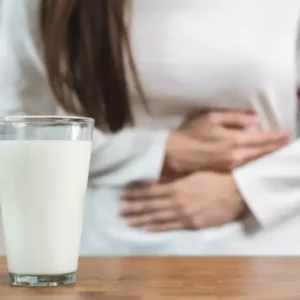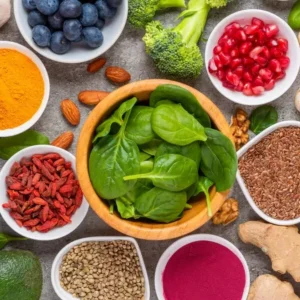The market for imitation meats (or plant-based meats, formerly nicknamed “fake meats”) constitutes a field of research and development in its own right. Explanations with entrepreneurs, determined to make us prefer nuggets and other plant-based steaks.
If you ate a vegetarian burger in the early 2000s, you probably remember a tasteless and greasy cereal patty that had nothing to do with a beef steak. Since then, things have changed a lot and veggie burgers have little to envy of their meat counterparts. Better, in addition to contributing to reduce animal suffering and climate changethey are often also healthier.
Guillaume Dubois, co-founder HappyVore, number two plant-based caterer in France with 18% market share and a range of 16 products, explains to Numerama: “ We aim to offer the same experience as with meat products and to allow consumers to consume less meat without changing their habits too much. » And this involves similar appearance, textures and tastes as well as the fact “ to offer products that are cooked in the same way as their meat counterparts, with the same recipes and the same cooking methods », he explains to us.

In fact, from steaks to sausages, including nuggets, bacon, bacon, ham, or even minced meats and escalopes, the booming market for plant-based meat today offers convincing alternatives to products derived from beef, pork or chicken.
2 years to develop a convincing “imitation”
It is a long and comprehensive research and development effort to reconstitute the organoleptic properties of meat on the basis of vegetable proteins and vegetable fats while offering nutritionally correct products. “ The level of requirements in terms of composition and nutritional content of imitation meats is extremely high. And if, obviously, they are – just like their meat counterparts – less healthy than a dish of raw legumes, there is real research to make them less rich in salt and fat, and just as rich in protein as the products that they aim to replace, or even more », explains Florimond Peureux, founder of Onav (National Observatory of Plant Foods).
“Avoid Frankenstein Products”
Nicolas Schweitzer (La Vie)
« Unlike first generation plant-based meats which multiplied the ingredients, we are keen to avoid ‘Frankenstein’ products and place a particular focus on the composition », adds Nicolas Schweitzer, co-founder and CEO of La Vie, a company which markets lardons, bacon and plant-based ham. Rehydrated soy proteins, sunflower oil, salt, natural flavor and colorings make up La Vie vegetable bacon, a relatively modest list of ingredients compared to that of Herta bacon: pork tenderloin, preservatives (sodium nitrite, lactate potassium, potassium acetate); salt; dextrose and antioxidants.
According to the various players in the sector with whom we spoke for this article, it takes around two years to develop a convincing product by mobilizing the expertise of agro-food engineers and physico-chemists, flavorists, nutritionists and chefs as well. that ultimately, of a panel of consumers. And, once a product is launched, it is not uncommon for a new version to be put on the market a few years if not a few months later. “ We note a desire for constant improvement, with the launch by brands of new versions of their products with less fat, less sweetness or less salt. », points out Florimond Peureux.

This is notably thanks to the ingredients used — proteins and fats, flavorings, spices, etc. — and their interactions, that the products aim to reproduce the taste of meat products and that they are distinguishable from each other. But the brands are also innovating and distinguishing themselves from each other in the way they take advantage of the widely used extrusion process, which consists of subjecting raw materials to thermal and mechanical stress in order to give foods the texture of meat.
“The key process is extrusion, which looks like a kind of pasta machine”
Guillaume Dubois (HappyVore)
« The key process is extrusion, which looks like a kind of pasta machine. », illustrates Guillaume Dubois. “ The products are heated to 50-60 degrees Celsius, hydrated, textured… It is a generalized method, but it is on the different settings, temperatures, formatting that we file patents. »
Nicolas Schweitzer reveals the three branches of R&D at LaVie: “ First of all, there is fundamental research, which aims to understand the characteristics specific to each ingredient and to develop what we call ‘building blocks’, avoiding additives. For example, for us, it’s creating a solid fat capable of cooking. Then, the application phase intended to use these ‘building blocks’ to create products like bacon. And finally the industrial phase which aims to bring the brief to an industrial scale. »
« We must already understand what meat is »
Antoine Derensy, R&D director at ACCRO, a company whose range currently includes 10 different products, looks back on the progress of the first phase within his own company: “ When you want to create a product similar to meat, you must already understand what meat is and what proteins it is made of. Indeed, proteins are responsible for both texture and nutritional intake, and contribute greatly to taste. »
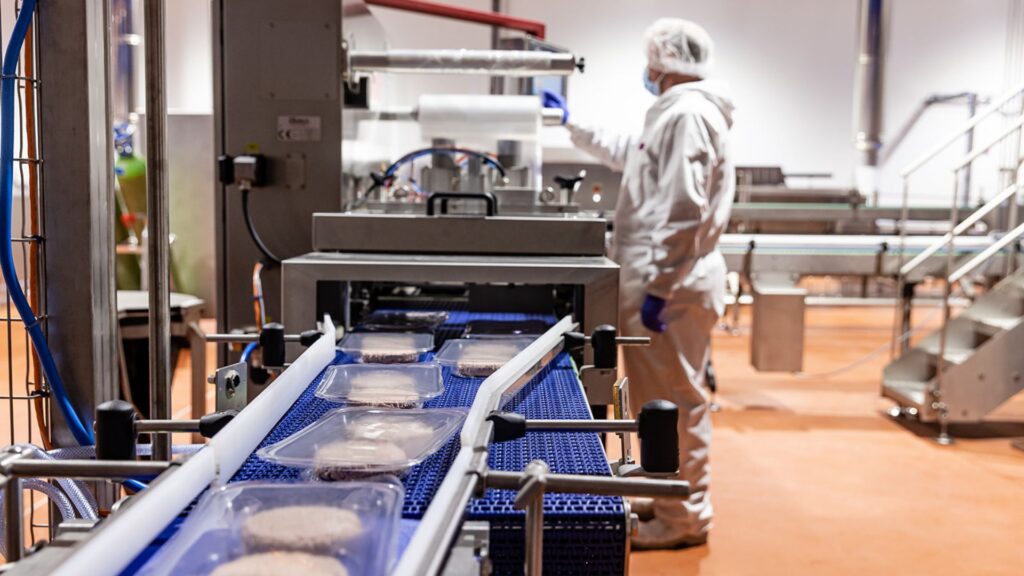
He explains that the first step is to carry out a detailed analysis of the meat products that plant-based meats aim to replace in order to understand their composition, their content, their structure, their elasticity and even their aroma. But here a first difficulty arises: “ Animal protein is very different from plant protein, particularly because animal proteins are made up of 50% water, much more than plant proteins produced from cereals. », explains Antoine Derensy.
“We use spices, notably cayenne pepper, natural flavors which give the smoky taste or even fermented plants. »
Guillaume Dubois (HappyVore)
It is then a matter of determining the best plant proteins to use and finding the way to create structure and texture by interacting with water and subjecting them to heat and shear treatment in order to regain both the juiciness and the fibrous texture specific to the meat.

Then, there is a whole research work on tastes and flavors. Here again, the meat product to be replaced is scrutinized and analyzed. “ Flavorists work to understand the molecules that generate the tastes and odors of meat products, and research and select natural plant flavors that can replace them. », Tells us Antoine Derensy. Guillaume Dubois points out that “ most often, it is not the taste of the meat that people like, but that of the spices or the smoke. So, we use spices, notably cayenne pepper, natural flavors which give the smoky taste or even fermented plants. »
Nutritional and environmental issues
As has been said, the specifications of imitation meat brands also include a nutritional component, so as to offer relatively healthy products, and at least as rich in protein as the meat products they aim to replace. This involves in particular the choice of proteins used which must also provide essential amino acids. Some brands then choose soya or others choose a cereal and legume combination. “ We have also chosen to enrich our products with vitamin B12 for people who consume little or no meat. », adds Antoine Derensy.
“Producing a kilo of plant-based steak emits six times less CO2 than the meat equivalent. »
Renaud Saïsset (ACCRO)
Others enrich their imitation meats with iron. To offer balanced products, it is also necessary to use vegetable fats that are also healthy and which, unlike saturated fats in meat, are not responsible for cardiovascular diseases. Hence the judicious use of rapeseed, olive or sunflower oils in always measured quantities for texture, chewiness and juiciness.
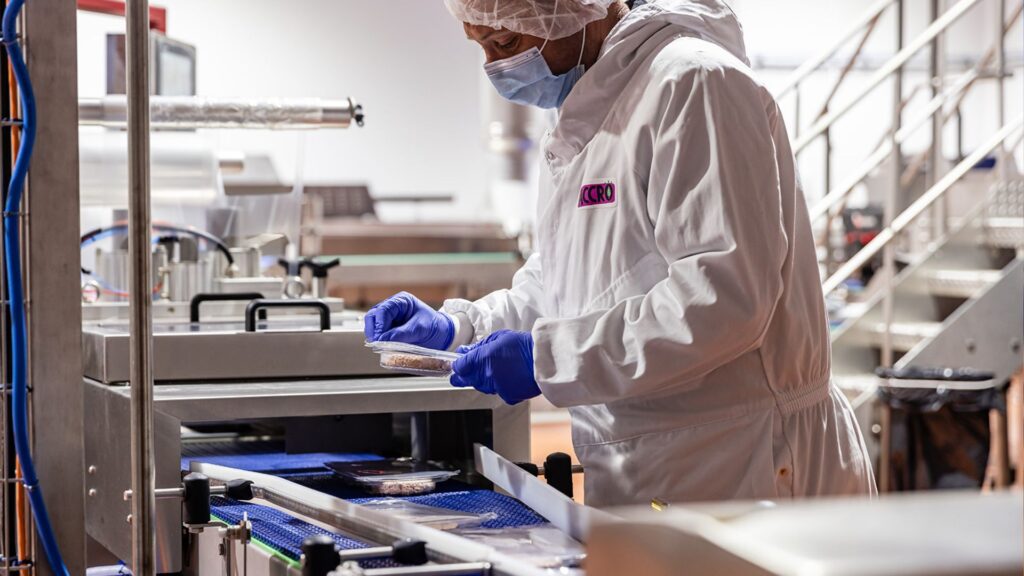
Finally, imitation meats must meet an environmental imperative : their manufacturing must have a much lower impact than that of meat products. Renaud Saïsset, Managing Director of ACCRO, explains: “ Our mission is also to act positively for the climate. We have carried out a carbon analysis of our products, for example comparing our plant-based steak with a beef steak. And producing a kilo of plant-based steak emits six times less CO2 than the meat equivalent. We have chosen to use agricultural crops close to our manufacturing site and have done everything possible to consume as little energy as possible and emit as little as possible. »
At La Vie, the promise is 88% less CO2, 82% less water and 74% less exploited soil. At HappyVore, 12 times less greenhouse gas emissions and 28 times less water required compared to the meat equivalent.
For further

Plant-based meats are expensive: why?
Does this important R&D work explain sales prices sometimes considered too high? Yes and no. Guillaume Dubois justifies himself: “ The price is indeed a huge challenge and the upstream investment inevitably pays off. Furthermore, we are not as efficient as a pork manufacturer who optimizes everything, for example by taking advantage of bones or connective tissues to make gelatin. And the meat sector is also a highly subsidized sector… »
“The ifs mili-carnés are not expensive products in themselves: the problem mainly comes from the margin that distributors take. »
Florimond Peureux (National Observatory of Plant Foods)
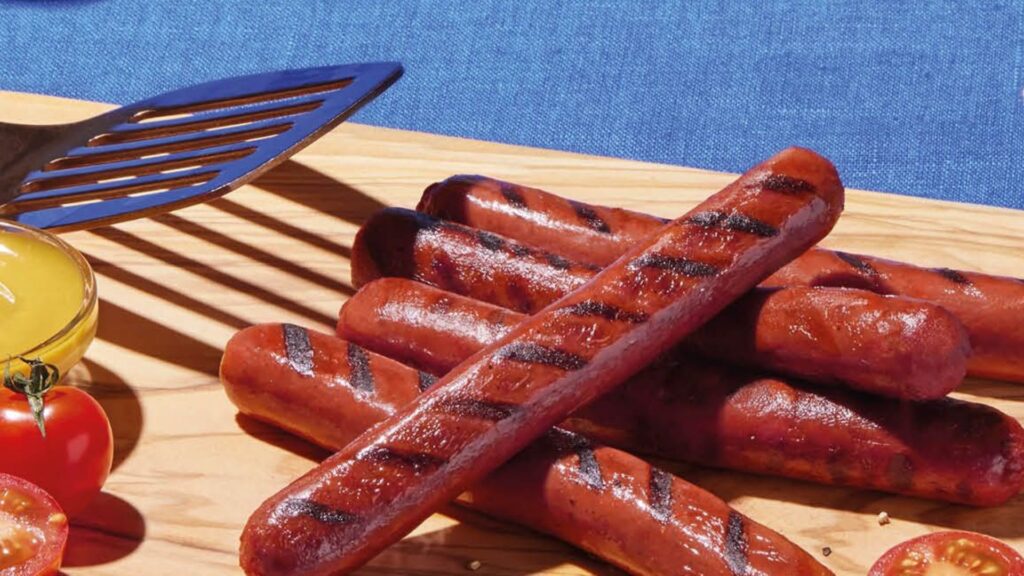
Florimond Peureux deplores the significant margin made by distributors: “ Simulated meats are not expensive products in themselves: the problem mainly comes from the margin that distributors take. They benefit from having a captive audience that is motivated and willing to make sacrifices. And plant-based meat brands have little or no negotiating power. »
What if we created plant fish?
Today, in addition to the continuous improvement of products placed on the market and the development of ranges of imitation meats, the question also arises, particularly for vegetarians and vegans, of the creation ofcompelling alternatives to fish. Antoine Derensy believes that “ on fish, we are where we were ten years ago for meat ».
« We are at the very beginning of the process and even if the fish has a very particular texture and taste, as long as the demand is there, solutions to produce good products will be found. », he adds. It remains that the demand is there, which is not exactly the case today, as Florimond Peureux suggests: “ It is a much smaller market than that of plant-based meat. Today, nutritional recommendations recommend eating fish regularly, not reducing its consumption! In fact, the majority of the public is not really interested and brands are less able to invest. »
For further

This content is blocked because you have not accepted cookies and other trackers. This content is provided by YouTube.
To be able to view it, you must accept the use carried out by YouTube with your data which may be used for the following purposes: allowing you to view and share content with social media, promoting the development and improvement of products from Humanoid and its partners, display personalized advertisements to you based on your profile and activity, define a personalized advertising profile, measure the performance of advertisements and content on this site and measure the audience of this site (learn more)
Do you want to know everything about the mobility of tomorrow, from electric cars to e-bikes? Subscribe now to our Watt Else newsletter !









